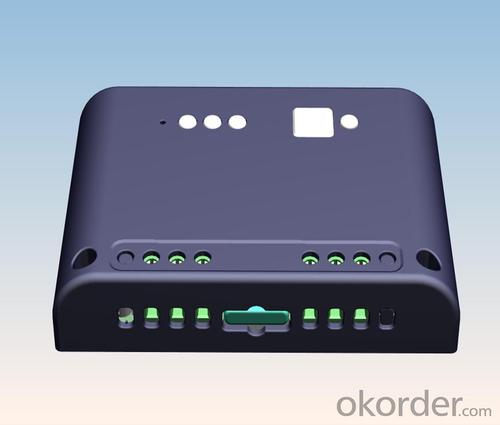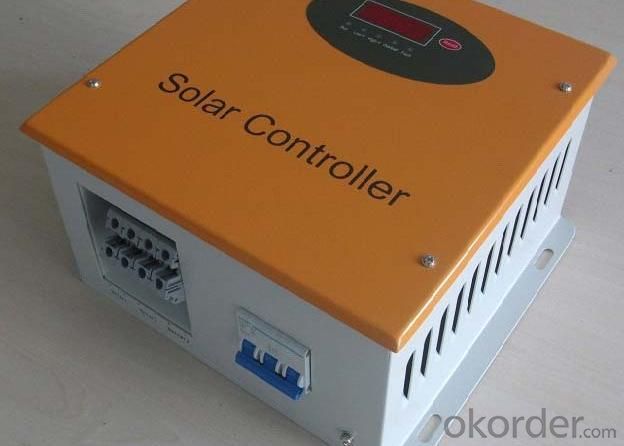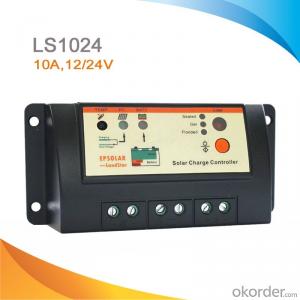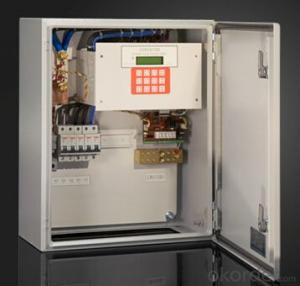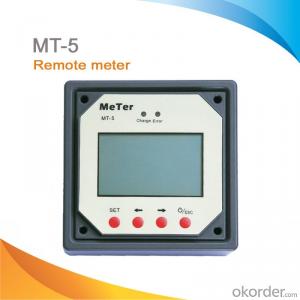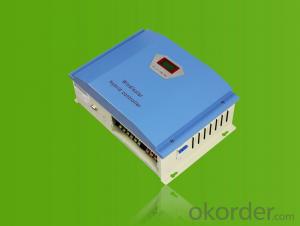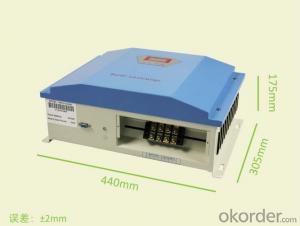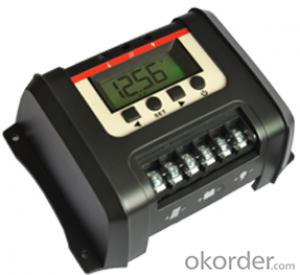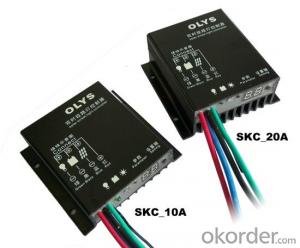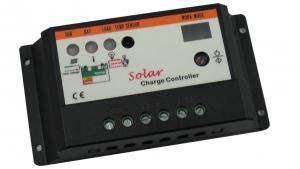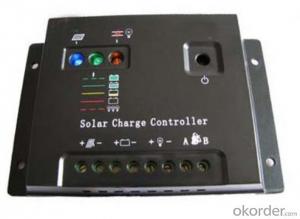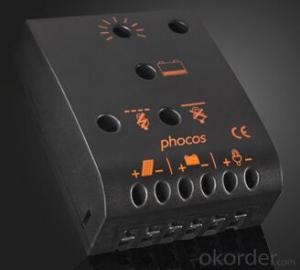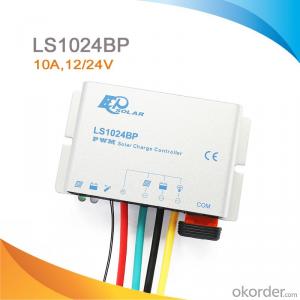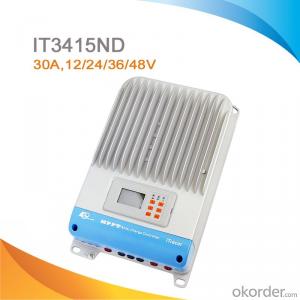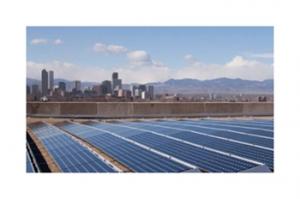H-Series Lithium-Ion Solar PV Controller
- Loading Port:
- Nanjing
- Payment Terms:
- TT/LC
- Min Order Qty:
- 50sets set
- Supply Capability:
- 1-3000sets/month set/month
OKorder Service Pledge
OKorder Financial Service
You Might Also Like
Main features of H-Series PV controller:
Professional MCU microprocessor control, the real charge and discharge of intelligent control;
Total negative control mode, multi-channel input matrix control of solar cells
High pressure, long life of the IGBT as the main switching device controller
Brightest charge voltage detection with "bad back" control to prevent switching into oscillation state
Control circuit and main circuit completely isolated, with a high anti-interference ability
Protection function, operation status, fault LED indicate
Low-power display state, further reducing its loss
Enables parallel operation of multiple machines
Against reverse battery
Remote monitoring (optional)
Optional Configuration of H-Series PV controller:
RS485/RS232 Remote monitoring;
Increase output control
Technical Data of H-Series PV controller:
Voltage level | 12V | 24V | 48V | 110V | 220V |
Rated current range | 30A~100A | 30A~100A | 20A~80A | 20A~60A | 20A~50A |
Battery input | |||||
Rated input voltage (VDC) | 12 | 24 | 48 | 110 | 220 |
Under-voltage protection (VDC) | ≤10.8 | ≤21.6 | ≤43.2 | ≤99.0 | ≤198.0 |
Recovery voltage (VDC) | ≥12.3 | ≥24.6 | ≥49.2 | ≥115.0 | ≥230.0 |
Over-voltage protection (VDC) | ≥16.5 | ≥33.0 | ≥66.0 | ≥150.0 | ≥290.0 |
Over-voltage recovery (VDC) | ≤15.5 | ≤31.0 | ≤62.0 | ≤142.0 | ≤284.0 |
Solar energy input | |||||
Max. open circuit voltage (VDC) | 25.0 | 50.0 | 100.0 | 230.0 | 450.0 |
Max. charge current (A) | 100 | 100 | 80 | 60 | 50 |
Allow PV array points (N) | 5 | ||||
Float voltage (VDC) | 13.7 | 27.4 | 54.8 | 125.0 | 251.0 |
Overcharge protection voltage (VDC) | ≥14.4 | ≥28.8 | ≥57.6 | ≥132.0 | ≥264.0 |
Charge recovery voltage (VDC) | ≤13.2 | ≤26.4 | ≤52.8 | ≤121.0 | ≤242.0 |
DC output | |||||
Rated output voltage (VDC) | 12 | 24 | 48 | 110 | 220 |
Max. output current (A) | 100A | 100A | 80A | 60A | 50A |
Overload capacity | 120% overload 60 seconds off the output / 150% overload for 10 seconds to close the output | ||||
Protection function | Battery over charge, over discharge the battery, the battery reversed,solar cells reversed , counter-attack by night charge , overheating, output overload, output short circuit | ||||
Serial communication | RS485(A、B) | ||||
Mechanical dimensions, work environment | |||||
Size ( D x W x H ) | 350 x 500 x180 | ||||
Reference weight (Kg) | 25 | ||||
Protection level | IP41 | ||||
Max. working altitude (m) | ≤3000 | ||||
Temperature range (℃) | -20 ~ +65 | ||||
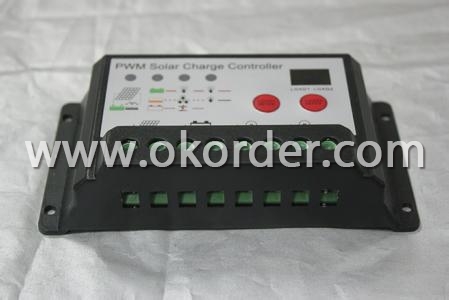
H-Series PV controller
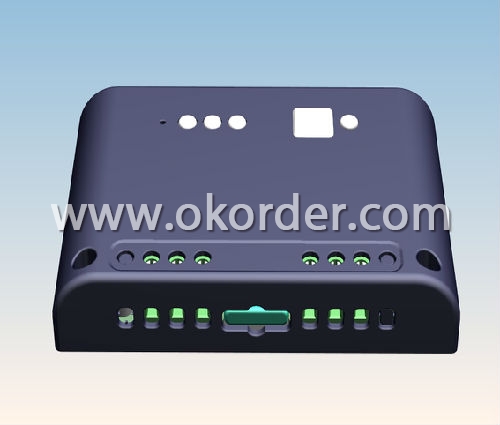
H-Series PV controller
Packaging & Delivery of H-Series PV controller:
Packaging: Wooden box or Customized
Delivery: Depends on the quantity or Customized
- Q: Can a solar controller be used with different types of solar batteries?
- Yes, a solar controller can be used with different types of solar batteries as long as the voltage and charging parameters are compatible with the specific battery type. However, it is important to ensure that the controller is designed to support the specific chemistry and requirements of the battery to optimize its performance and lifespan.
- Q: Can a solar controller be used with solar panels of different mounting systems?
- Yes, a solar controller can be used with solar panels of different mounting systems. The solar controller's primary function is to regulate the charging of the batteries in a solar power system, ensuring that they are charged efficiently and protected from overcharging or discharging. It is not dependent on the specific mounting system of the solar panels. The solar controller connects to the battery bank and manages the flow of energy from the solar panels to the batteries. As long as the solar panels are properly connected to the solar controller, it can be used regardless of the mounting system used for the panels.
- Q: What is the equalization charging mode of a solar controller?
- The equalization charging mode of a solar controller is a function that periodically applies a higher voltage to the battery bank to balance the charge levels of individual cells or batteries. This helps to prevent stratification and sulfation, ensuring the longevity and optimal performance of the battery bank.
- Q: Can a solar controller be used with different types of batteries (e.g., lead-acid, lithium-ion)?
- Yes, a solar controller can be used with different types of batteries including lead-acid and lithium-ion. However, it is important to ensure that the solar controller is compatible with the specific type of battery being used in order to optimize charging and prevent damage to the battery.
- Q: What is the maximum voltage drop allowed between the solar panels and the batteries?
- The maximum voltage drop allowed between the solar panels and the batteries depends on the specific system and its components. Generally, it is recommended to keep the voltage drop as low as possible, ideally below 3% to ensure efficient power transfer and minimize energy loss. However, it is best to consult the manufacturer's specifications and guidelines for the specific solar panels and batteries being used to determine the maximum allowable voltage drop.
- Q: What is the difference between a solar charge controller and a solar regulator?
- A solar charge controller and a solar regulator are essentially the same thing. They both refer to a device that regulates the voltage and current coming from a solar panel to ensure that the battery being charged does not overcharge or discharge. The terms "solar charge controller" and "solar regulator" are often used interchangeably to describe this device.
- Q: How does a solar controller handle the monitoring of system performance?
- A solar controller handles the monitoring of system performance by continuously measuring the voltage and current output of the solar panels and comparing it with the expected values. It keeps track of the energy generated and consumed, battery status, and other relevant parameters. Additionally, it may have built-in sensors to detect temperature, irradiance, and other environmental factors that can affect system performance. Based on this information, the solar controller can optimize the charging and discharging of the batteries, ensure the system operates within safe limits, and provide real-time feedback on the overall performance of the solar system.
- Q: How do I calculate the required charging current for a solar controller?
- To determine the necessary charging current for a solar controller, several factors must be taken into account. Firstly, the capacity of the battery being used needs to be determined. This information can typically be found on the battery label or specification sheet and is measured in ampere-hours (Ah). Subsequently, the desired charging time for the battery must be established. For instance, if the goal is to fully charge the battery within 5 hours, the battery capacity would be divided by 5. Once the desired charging time is known, the required charging current can be calculated by dividing the battery capacity by the charging time in hours. For example, if a battery has a capacity of 100Ah and it needs to be fully charged in 5 hours, the required charging current would be 100Ah / 5h = 20A. It is essential to ensure that the solar controller has a rated charging current that is equal to or higher than the calculated required charging current to guarantee efficient and safe charging of the battery. Additionally, it is advisable to incorporate a safety margin of approximately 10-20% to account for any inefficiencies or variations in solar conditions.
- Q: Can a solar controller be used with wind turbines?
- Yes, a solar controller can be used with wind turbines. While a solar controller is primarily designed to regulate the charging of batteries in a solar power system, it can also be used to regulate and control the charging of batteries in a wind turbine system. The controller helps to optimize battery charging by monitoring the voltage and current produced by the wind turbine.
- Q: Can a solar controller be used with solar-powered indoor electric vehicle charging stations?
- Yes, a solar controller can be used with solar-powered indoor electric vehicle charging stations. A solar controller, also known as a charge controller, is designed to regulate the flow of electricity from solar panels to the battery bank. It ensures that the batteries are charged properly and prevents overcharging or discharging. In the case of indoor electric vehicle charging stations that are powered by solar energy, the solar controller plays a crucial role in managing the electricity generated by the solar panels. It ensures that the charging station receives the right amount of power and that any excess energy is properly stored in the battery bank for later use or fed back into the grid. By using a solar controller, the solar-powered indoor electric vehicle charging station can effectively harness and utilize solar energy, making the charging process more efficient and sustainable. The solar controller helps optimize the charging station's performance, ensuring reliable and clean energy for electric vehicle charging, even in indoor environments.
Send your message to us
H-Series Lithium-Ion Solar PV Controller
- Loading Port:
- Nanjing
- Payment Terms:
- TT/LC
- Min Order Qty:
- 50sets set
- Supply Capability:
- 1-3000sets/month set/month
OKorder Service Pledge
OKorder Financial Service
Similar products
Hot products
Hot Searches
Related keywords



